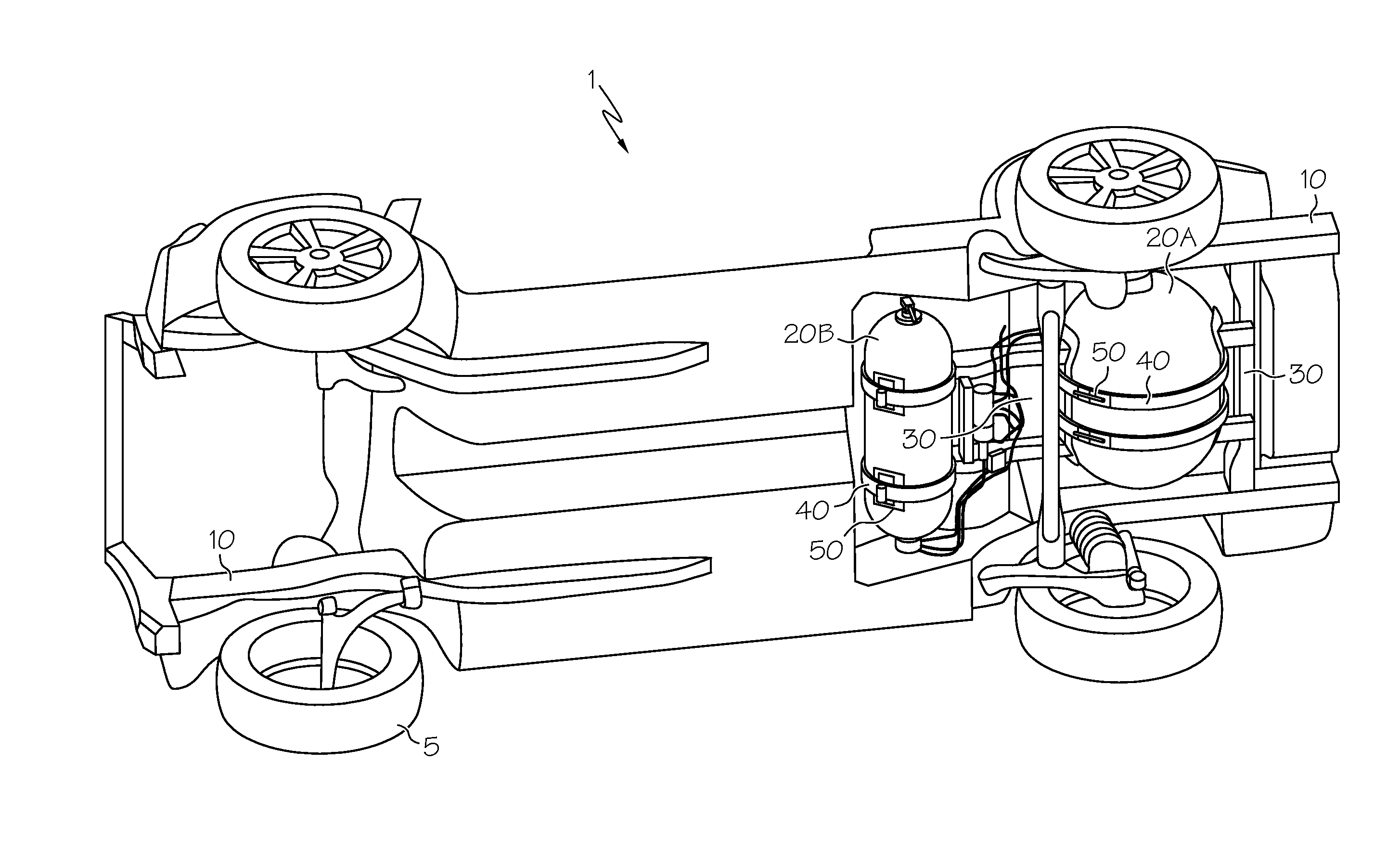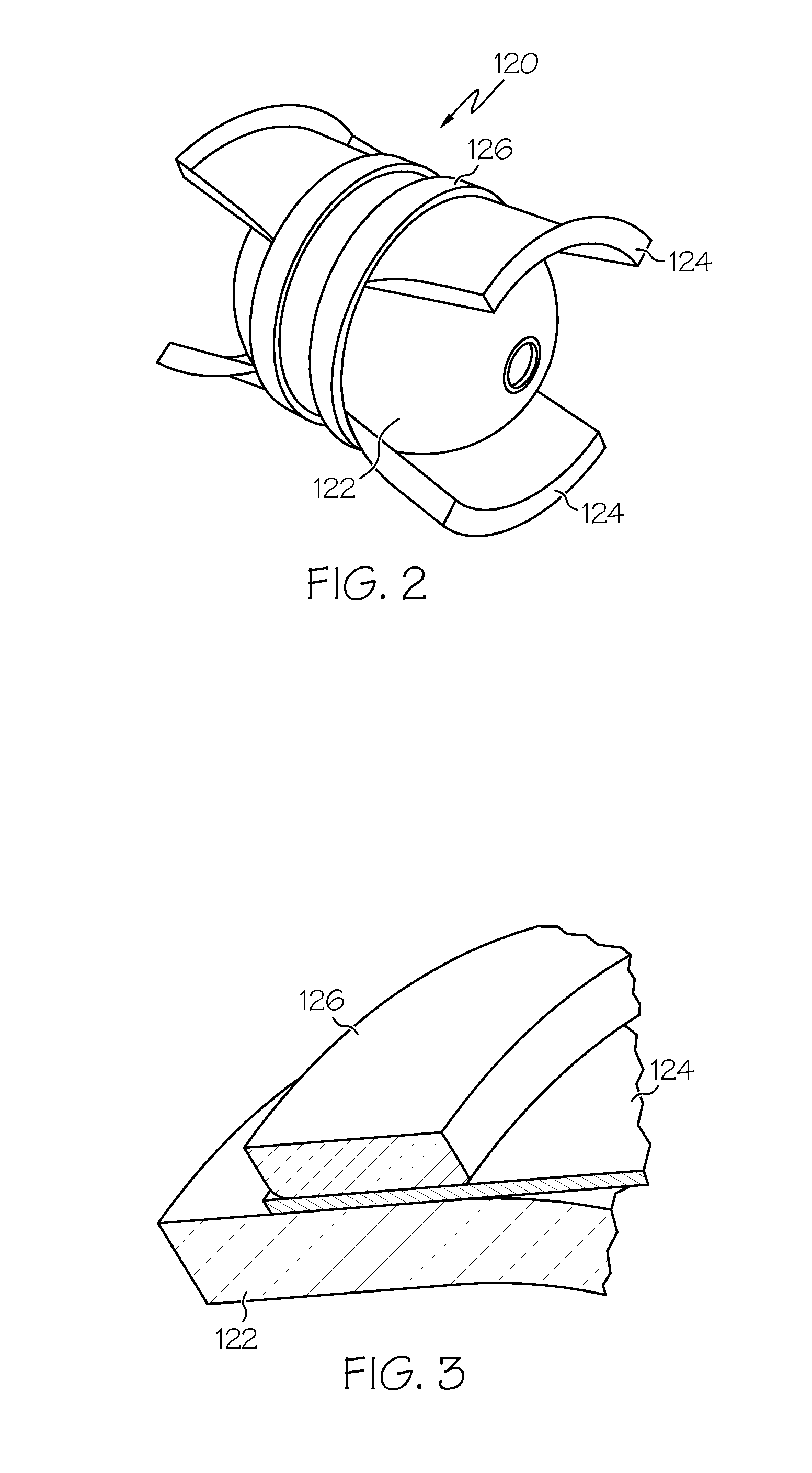Integrated pressure vessels for vehicular applications
a technology for vehicular applications and pressure vessels, applied in the direction of electrochemical generators, transportation items, containers, etc., can solve the problems of assembly damage, especially vessels, and achieve the effects of enhanced connectivity, enhanced resistance to deformation defined in the frame, and enhanced overall moment of inertia of the fram
- Summary
- Abstract
- Description
- Claims
- Application Information
AI Technical Summary
Benefits of technology
Problems solved by technology
Method used
Image
Examples
Embodiment Construction
[0024]Referring first to FIG. 1, a tank-mounting arrangement for a high pressure hydrogen storage tank system according to the prior art shows a vehicular chassis 1 with four wheels 5 mounted to a frame 10 made from longitudinally-oriented sections of tubular steel. Frame 10 provides the primary structural support for most of the remaining components of chassis 1, as well as the body (not shown) of the vehicle; much of the load-bearing capability inherent in frame 10 is due to its size, shape, material choice and related design attributes that are understood by those skilled in the art. A fuel cell-based motor (not shown) could be situated in any convenient location within the chassis 1, for example, between the front wheels 5 shown on the left side of the figure. Gaseous fuel is stored in one or more tanks 20. In the version shown, a pair of such tanks includes a larger main tank 20A and a smaller secondary tank 20B. Both tanks 20A, 20B are secured to chassis 1 by crossbars 30, str...
PUM
| Property | Measurement | Unit |
|---|---|---|
| length | aaaaa | aaaaa |
| length | aaaaa | aaaaa |
| length | aaaaa | aaaaa |
Abstract
Description
Claims
Application Information
 Login to View More
Login to View More - R&D
- Intellectual Property
- Life Sciences
- Materials
- Tech Scout
- Unparalleled Data Quality
- Higher Quality Content
- 60% Fewer Hallucinations
Browse by: Latest US Patents, China's latest patents, Technical Efficacy Thesaurus, Application Domain, Technology Topic, Popular Technical Reports.
© 2025 PatSnap. All rights reserved.Legal|Privacy policy|Modern Slavery Act Transparency Statement|Sitemap|About US| Contact US: help@patsnap.com



